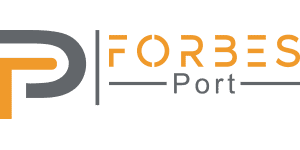6 Ideas for Enhancing the Soy Supply Chain

Regarding the agricultural supply chain, complacency is the rival of growth. The supply chain is a very crucial part of the overall strategy of a business, and this is the same for the soy business. Customer presumption and increasing universalization are pressing the supply chains. Hence, you should constantly remodel the supply chains to reduce and manage the risks.
An efficient soy supply chain has many benefits, including; improved quality control, better collaboration, higher efficiency rate, shipping optimization, and keeping up with demand. However, optimizing and improving your soy supply chain can be challenging.
In this piece, you will learn how to enhance your soy supply chain in the most straightforward ways possible.
1. Expand the Visibility of the Supply Chain
Expanding the visibility of logistics operations is the first step in enhancing the soy’s supply chain. The best method is to invent soy management strategies that permit you to keep track of soy levels as you move through stages, from receiving to customers. An example of an invention is the inventory management software (IMS). It can access soy tracking, so you can avoid backorders and stockouts and provide more visibility.
Therefore, expanding visibility is essential in enhancing global soy supply chain as it can assist you in making informed decisions that include inventory forecasting.
2. Choose Reliable Suppliers
Every supply chain, including soy, begins with supplying; hence if you want to improve the supply chain, evaluate and choose reliable supplies. Evaluate depending on issues like reliability, communication, and speed. A business must have good supplier-business communication to succeed. Can you understand each other easily? Do they answer emails on time? The best suppliers are always responsive. Without a doubt, suppliers must be reliable.
Soy supply should be quick; shipping of soy orders should always be on time. Otherwise, that will negatively affect the soy supply chain business. Lastly, consider how fast your supplier can meet the demand to maximize the soy supply chain.
3. Use Demand Planning
There are different ways to manage a soy supply chain, but demand planning should be considered one of the best. It is the process of forecasting the demand for soy to ensure it can be delivered on time and satisfy the customers. The objective is to maintain a balance between having enough soy levels to satisfy the demands of clients without having a surfeit. Many factors can influence the demand for soya, including severe weather, economic shifts, natural disasters, and labor force changes.
Many aspects should be considered in demand planning, with three primary areas. The areas include; soya portfolio management, which oversees the life cycle of soya, statistical forecasting, and trade promotional management. Demand planning allows soya businesses to be ahead of market shifts and make more proactive decisions as they respond to customers’ demands.
4. Review Procedures Regularly
The council involved in the supply chain should review procedures and policies often to make sure they monitor compliance and efficiency. Good supply chain managers know that something working well today does not mean it will work well tomorrow. Therefore, following up on essential factors in the soy supply chain is necessary to eliminate the weak ones. Monitor the recent supply chain performance and ensure you notice any emerging patterns. If any problem is identified, decide on the best action to improve it. This may include a few factors like training the people handling the soy or trying a more efficient shipping service.
5. Use Real-Time Data for Consistent Improvement
Improvement of the soy supply chain also includes using real-time data. Having access to the correct data from the analysis reporting department can help you make better decisions for planning the supply chain of Soya. Soya capacity used, order accuracy, and the average cost per soya unit of storage, shipment, and fulfillment are all crucial issues you need to track, as they provide perception as to which areas of the soya supply chain require an upgrade and which ones are blooming.
You can also automate the soya supply chain. Finding methods on how you can automate the supply change can really improve efficiency and raise performance. This also minimizes human error and helps you save time and money in the long run. Automation does not mean completely ruling out the need for human effort. It assists you in streamlining operations and increasing soy productivity. This way, the soy business can focus more on marketing and other crucial aspects.
6. Create a Returns Management System
Having a returns management system is very important. There are many reasons behind this. First, you maintain the satisfaction of customers. This is achieved by ensuring that any wrong or damaged soy is returned cost-effectively, fast, and as efficiently as possible. In addition, you can keep up with the damaged soy that should be returned to the supplier. Hence, you could increase the return time window to control the soy returns.
Closure
Enhancing the soy supply chain to be efficient is a difficult task. Many factors should be considered to ensure the cost is minimized and the customer’s demands are met. These tips could greatly assist if you are currently unsatisfied with the soy supply chain. Remember that it is a process. Thus, consistent improvement is vital to achieving the eventual goal.




